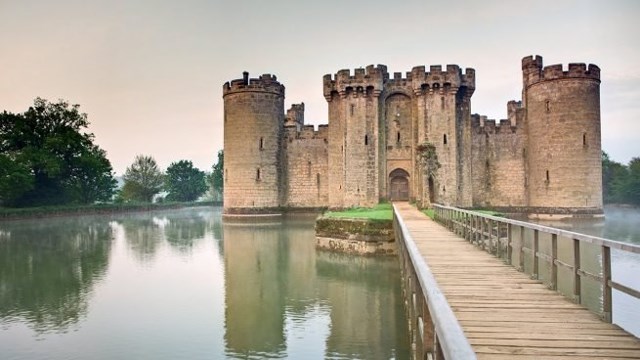If you grew up watching Disney movies, you probably have the perception that living in a castle has to be the best thing in the world. The mere presence of these fortresses not only denotes grandeur, but at the same time, they are a symbol of status and royalty. I am sure that all of us at some point in our lives have come to dream of living inside a castle (I hope I was not the only one). But as they say over there “Reality can be sadder and more depressing”. Without wanting to be the spoilsport, today I am going to explain what it was like to live in a medieval castle. I bet you that after reading this entry, you will be both surprised and disgusted in equal parts.

You will be safe living inside a castle.
Let’s start by making the purpose of these strengths very clear. A castle was built with the sole intention of protecting or safeguarding the royalty and nobles who inhabit it. Its architects built it with that idea firmly in their heads, and the truth is that they achieve it with great effectiveness (at least for their time).
However, they only thought about how the castle protected, but not about the luxuries or comforts that you could expect. Yaquis? White water flow? Cozy temperature? What’s up man, those things were not taken into account when building a castle. Most of it was cold and damp, plumbing back then didn’t exist, and showers… Well, I’ll leave that for the next point.
You were not very hygienic places.
The castles did not have pipes for white water or black water. Not to mention that because of the materials used to build them, most of the fortress was damp. Which gave rise to the development of bacteria and little adorable animals? As if that were not enough, in the middle ages people did not use to bathe on a daily basis as we do today. Furthermore, it was quite normal for commoners to go up to months without taking a single shower.
The nobles and kings did not escape from emanating one or another pestilential smell. However, they used to hide bad odors with the use of perfumes or aromatic plants. In addition, we must bear in mind that the castles were mostly closed spaces with little ventilation, so you can imagine the concentration of odors that were inside those structures. Doesn’t it sound great to live inside a smelly castle?
The castles were mostly dark and dimly lit inside.
Living inside a castle, you not only had to deal with bad smells, humidity and poor ventilation. But in turn many of its corridors and rooms were poorly lit. So this idea that you could appreciate the majesty of your fortress from inside was only possible in certain areas and at specific times of the day.
This happened not only because of the limitations of the time (remember that there was no electricity in the Middle Ages). But by its own military strategy, let us remember that these architectural works had the function of protection, so they did not allow for possible openings where the enemy could slip away. Or had a lot of visibility inside. The less the enemy knew what the inside of the fortress was like, the better.
The menu was not that varied.
If you still have hopes of living inside a medieval castle at this point, let me tell you about the food menu. You might think that as a king he enjoys great feasts and the best cuisine in the kingdom, but the truth is that the king only enjoys food in abundance. But the least is quite poor in terms of variety of food.
This is due to the difficulties in storing food, so it is not possible to think of foods with little conservation (such as fish). Unless the location of the castle allows you to obtain said food fresh. Otherwise, you will have to put up with the same menu week after week, so that after a while living inside a castle will stop being as charming as you thought.
In this way we conclude with the writing of this article, we hope that it has been to your liking, worse than above all. You have satisfied your curiosity to imagine what it would be like to live inside a medieval castle. Despite all the difficulties that this represents, it is undeniable that the majesty of these architectures will continue to fascinate us over time.








